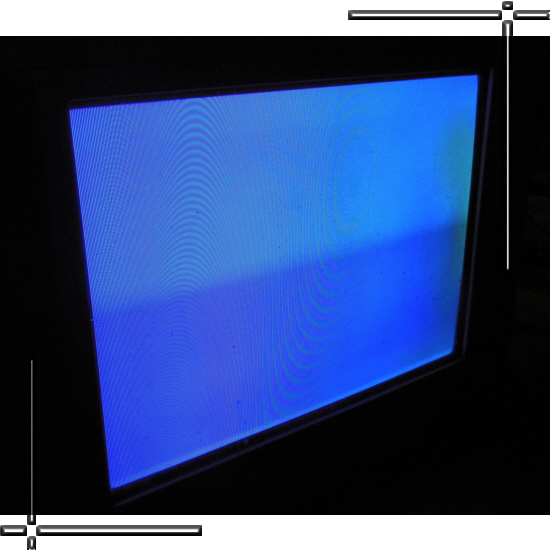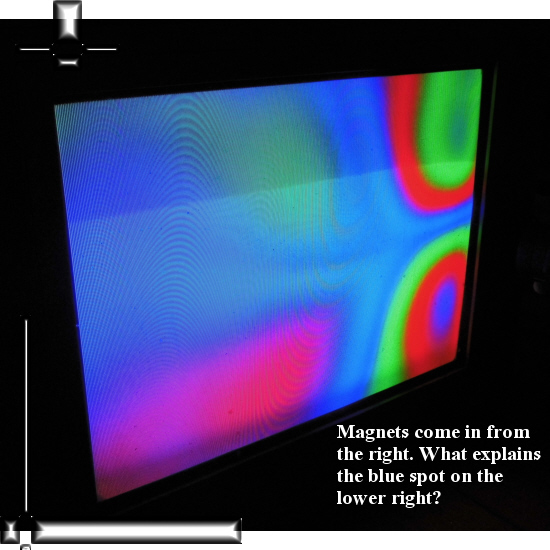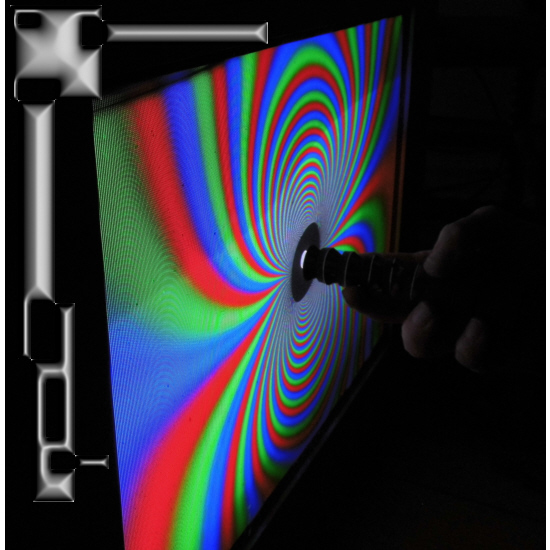The correction is rather simple: In the past I always said that those old televisions run on something like 50 thousand Volt. That is of course the kathode electric potential and not your input voltage. That is not entirely correct: all photo’s I showed you in the past were made with a small television set and those seem to need a lower kathode voltage. May be something in the 25-30 kV range.
So that is a small correction but I have written posts where we tried to calculate the sideway acceleration and I based the speed of the electrons going from the electron cannons to the glass screen on the 50 thousand Volt. I memory served that gave a giant speed of almost one third of the speed of light and that gave giganormous numbers when it came to sideway acceleration. If indeed those small tv sets run on a lower electric potential, that was a bit over the top.
Well that does not impede the fact that electrons are likely magnetic monopoles and not magnetic dipoles as the standard model of physics says. So far for my correction on past statements.
I am still having a bigger television and I finally made a few photo´s of the behavior of electrons with that oldie. It is best to make those pictures in a dark room so that your camera has a relatively long shutter speed. I tried it once at daylight outside but that gave lausy results because in between the rereshment of the screen it often is black because no electrons have landed there recently. If you take photo´s in a dark room it gets better. When I looked with my human eyes to the television without any magnets around, I see a clear blue uniform is color and intensity everywhere. In the next photo you see how the camera ´sees´ it. Not very uniform…

In the next photo I come in from the right with a stack of magnets. It is amazing from how far away the screen already starts changing.

In the above photo you likely see already the separation of the ´blue´ electrons in those that are attracted by my stack of magnets. That should be the blue spot on the lower right. The other blue region should have at it´s right lower boundary mostly repelled electrons while that large blue region could also contain a lot of electrons that are not disturbed enough.
Ok, the next photo is more important because even at 50 thousand Volt with the relatively sharp tip of my neodymium magnets you get that dark disk where no electrons land. So we have a clear separation of electrons that are attracted versus those that are repelled by the magnetic field from the stack of magnets.
Remark it is very hard to explain the dark region where clearly no electrons land with the Lorentz force. The standard model has only this Lorentz force in it and ok ok they also use that weird term for the potential energy for an electron in an inhomogeneous magnetic field but in my view that is not correct because it does not include the size of the electron. And by the way, it should be a cakewalk to separate the electrons according to their spin using magnetic fields that are as uniform as possible. There are still plenty of those in physics labs all over the world, if electrons are magnetic monopoles it should not make much difference if you use a uniform or non/uniform magnetic field.

In the last photo I turned my stack of magnets around. On the other side I often have 2 or 4 ring shaped magnets that I removed from two magnetron ovens. They have a hole through the middle and I tried to photograph it such you can look through that very hole.

Model model on the wall, where is the standard in this all…
I hope you see that tiny spot in the middle where the attracted electrons create a while light. Ok that was it for this update. In the meantime I am working on a post around the sphere/cone equation written in matrix form. But that is far from finished so see you somewhere next month!
End of this post.